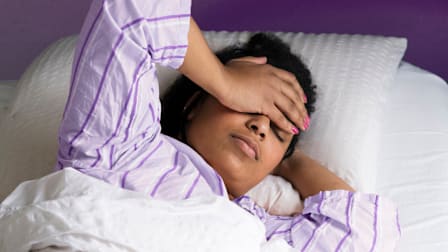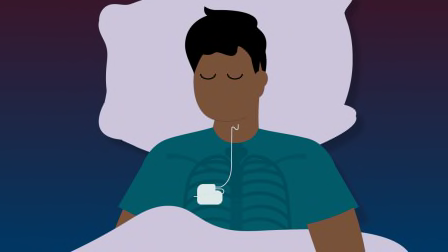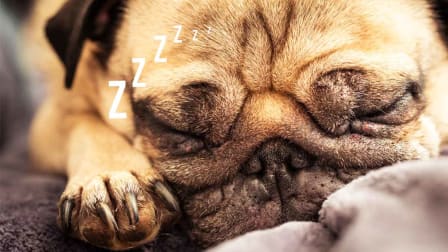How to Diagnose and Treat Sleep Apnea
If you snore often and nod off at odd times, it could be sleep apnea, and there are treatments that can help

Do you ever fall asleep mid-conversation? Disturb your partner with your snores? Abruptly wake up feeling like you’re gasping? All three are common signs of obstructive sleep apnea, a disorder in which the throat muscles relax and block the airway, causing breathing to temporarily stop multiple times during sleep.
Nearly 30 million U.S. adults have obstructive sleep apnea, and about 23.5 million of those cases are undiagnosed, according to the American Academy of Sleep Medicine. While many people with sleep apnea don’t realize they have it, the condition increases the risk of heart failure and stroke. Getting a diagnosis is critical because it’s the first step toward treatment—and better sleep.
How Sleep Apnea Is Diagnosed
To determine whether you have sleep apnea, a doctor will usually order an overnight test to be done either at a lab or at home. “There are benefits of both,” says Virend Somers, MD, PhD, who directs the Cardiovascular and Sleep Facilities within Mayo Clinic’s Center for Clinical and Translational Science.
Understanding CPAP
While lifestyle changes can make a difference, especially for moderate sleep apnea, the gold standard treatment is continuous positive airway pressure (CPAP) therapy. CPAP devices essentially work by blowing air into the back of the throat to keep the airways open. The device sits by the side of the bed and is attached to a mask worn while sleeping. When used consistently, CPAP can alleviate sleep apnea symptoms.
Wearing a pressurized mask isn’t always comfortable. “Forty percent of people don’t tolerate it well at all,” Somers says. But using a CPAP consistently has real benefits. In addition to decreasing daytime sleepiness and boosting productivity and mood, the device can lower high blood pressure in some who use it for more than 4 hours a night.
And there are options designed to make CPAP less challenging. While some masks fully cover the nose and mouth, others simply rest under the nostrils. Another option is an autoCPAP, or APAP, which modulates the intensity of airflow in the night based on changes in your breathing.
Still, even a best-case CPAP experience takes some getting used to, Pien says, often at least a month. The first few nights are unlikely to go well, but keeping at it—plus practicing using the machine during the day—can help.
Beyond CPAP: Other Treatments for Sleep Apnea
Though CPAP is the standard treatment, apnea can also be addressed with what’s known as oral appliance therapy or with an electrical implant. The first option, in which a customized device inside the mouth is used to move the jaw forward to create more space in the airway, is becoming a more common choice. (Ask your doctor for a referral to a dentist with training in treating sleep apnea.) The second option involves implanting a pacemaker-like device such as the Inspire in the chest that uses electrical impulses to prevent the tongue from collapsing into the throat.
Each approach can work well for certain people but can also have limitations. Oral appliance therapy is effective only about half of the time, and it’s better suited for those with milder sleep apnea, while a stimulation device is somewhat invasive, according to Pien. Both are less likely to be covered by insurance plans than a CPAP device.
Editor’s Note: An earlier version of this article also appeared in the January 2023 issue of Consumer Reports On Health.




















